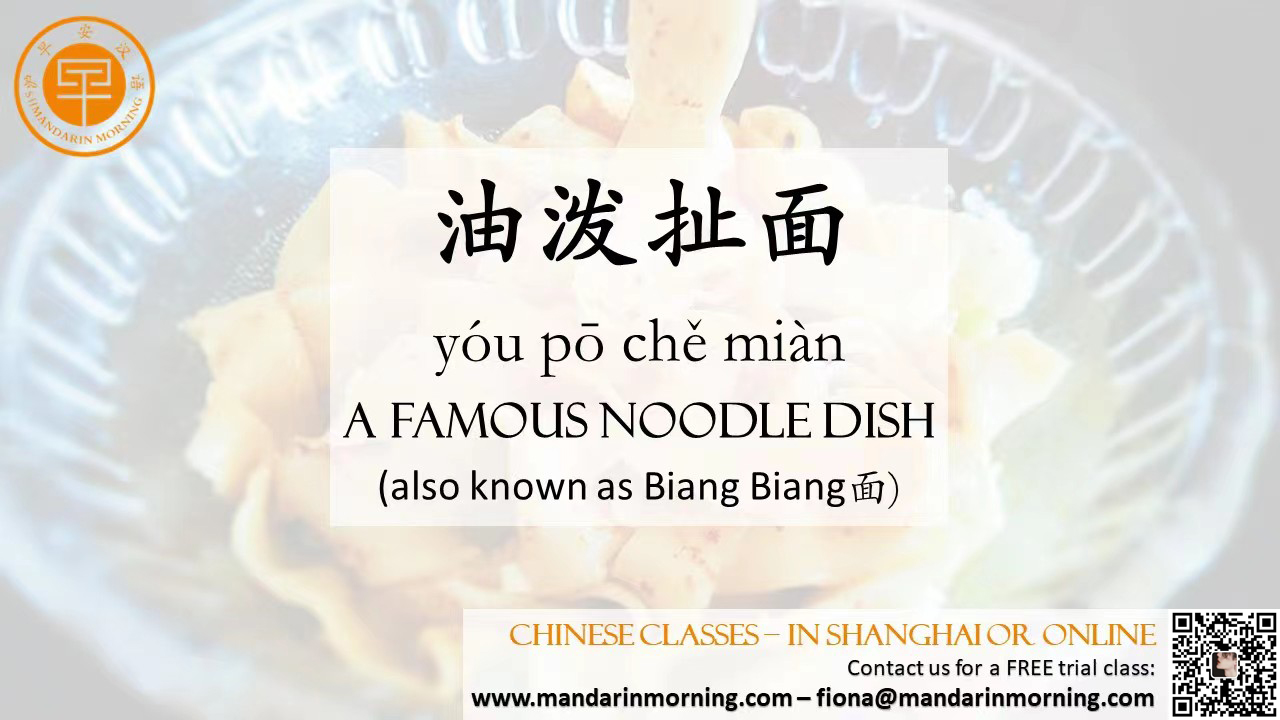【Learn Chinese】Traditional Food in China: Biang Biang Mian |
| Biang Biang Mian also holds hall of fame status in China because the symbol for Biang is so complex, that most restaurants omit the Chinese character and replace it with the pinyin in their menus. Let’s introduce you to the symbol before we introduce you to the food itself, and a little bit of useful information. Actually, before we do it’s worth noting that Biang Biang Mian has an alternate name which is a little easier on the eye but maybe doesn’t roll off the tongue as easy as the above – yóu pō chě miàn 油泼扯面. Either or, they both relate to the same, wonderful dish. The symbol for Biang is so complex that it cannot be typed on a computer. It’d just be a mash up characters that is virtually incomprehensible. The traditional character boasts a ridiculous 58 strokes, and the simplified one a mere 43. Typically, the name of the dish includes two of the same character so to simply write the name of the dish you have to manage over 100 strokes! You can see why restaurants list the dish as BIANG BIANG 面!  What about Biang Biang Mian itself? It comes from the Xi’an region of China and is usually served in a big bowl covered with lots of little treats that you are supposed to mix into the noodles. These treats include egg, meat, tomato, small diced potato and much more. The noodles are the layer below and they sit in a little pool of oily sauce. Mix it all together and you get a wonderful mixture of flavours that send your taste buds wild. You also have the option to spice it up, if you so wish. It’s very rare you meet a person who doesn’t like this dish and it’s an absolute must try if coming to China – even better, if you are going to be visiting Xi’an. It’s also worth noting the noodles, they are almost “belt-like”. Thick and long, they tend to catch attention when foreigners first get stuck into this dish. |